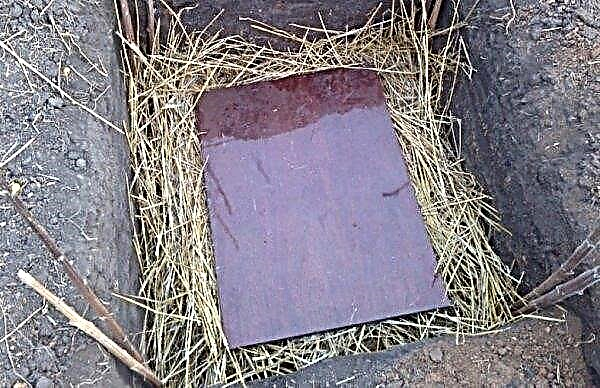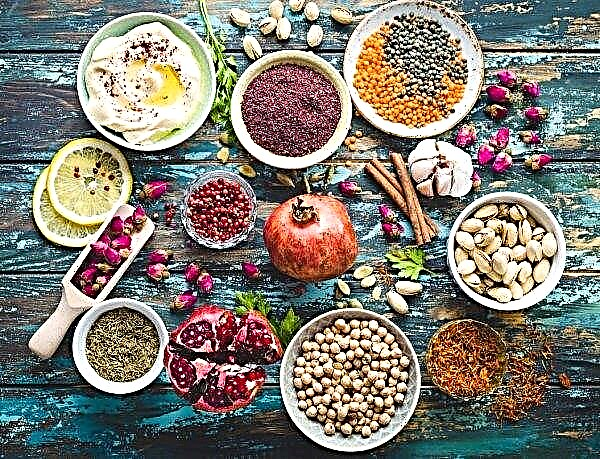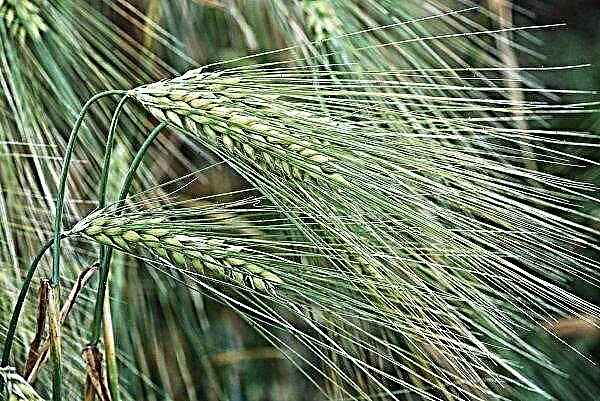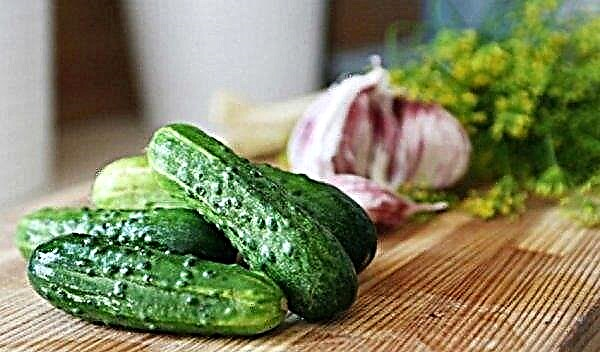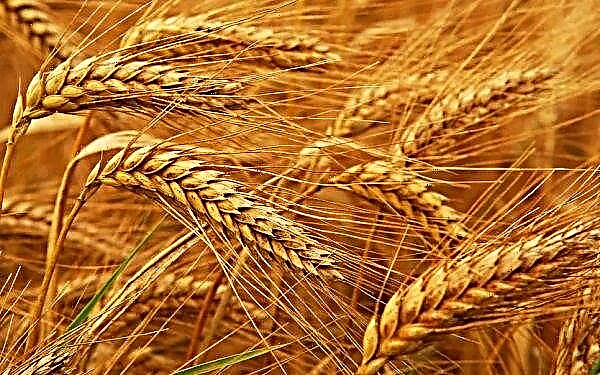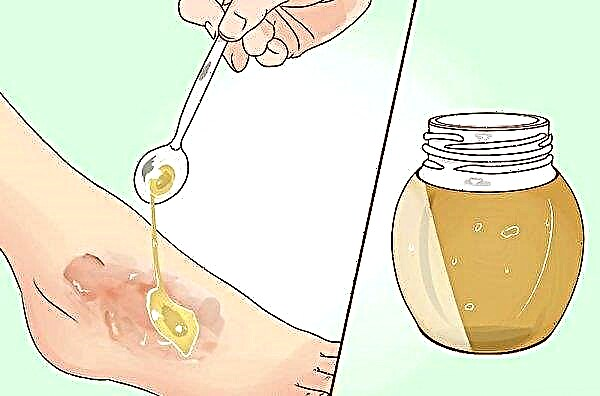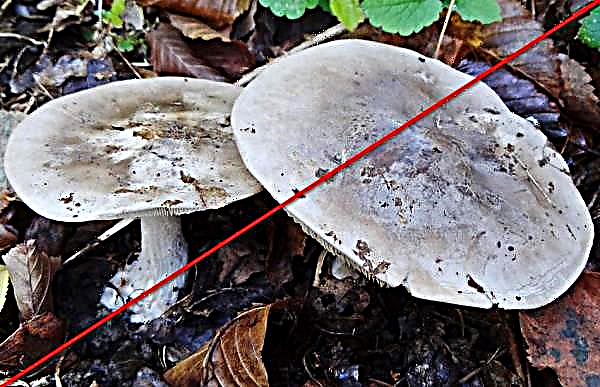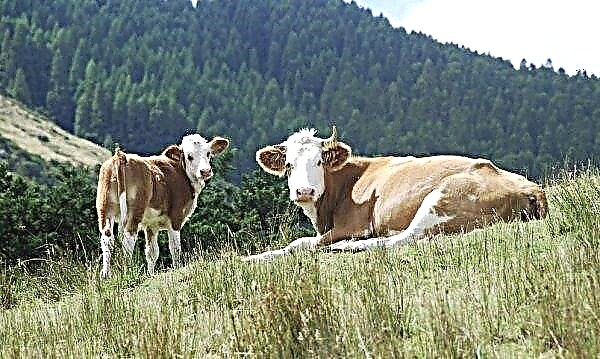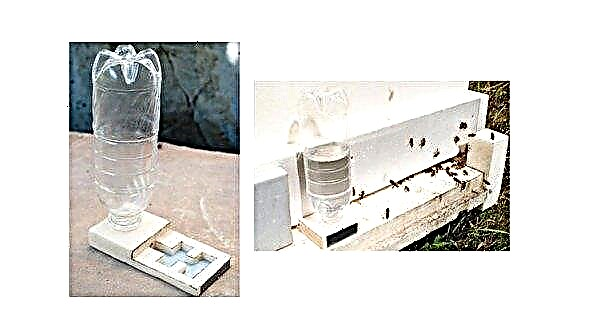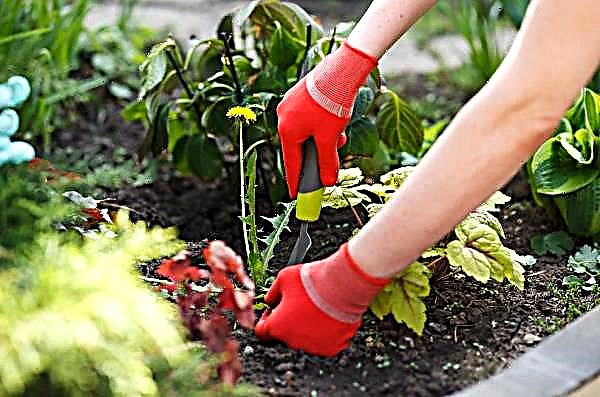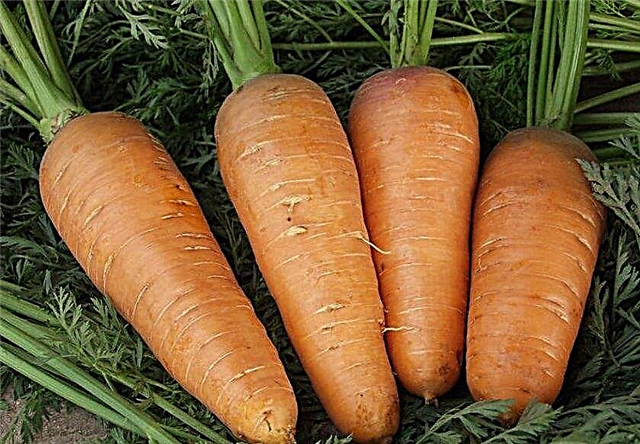Fertilizing is as vital for seedlings as watering and loosening the soil. The correct selection of fertilizer composition, time and method of their application affect the supply of sprouts with force for full vegetation and fruiting.
Why is feeding necessary?
When growing seedlings, all nutrients from a limited amount of soil in pots are gradually used. With their shortage, the bushes stop the growth and development, become more vulnerable to diseases and give in the future a weak crop of small fruits. At the same time, it is important not to overfeed the pepper so as not to provoke excessive development of green mass and bud dropping.
Did you know? Peppers are usually grown as an annual crop, although in fact they are perennials and can grow and bear fruit for several years at home.
The main types of feeding
Feeding seedlings should be tailored to the needs of the culture. Consider the main types of fertilizers and their composition.
Mineral
For the full development of pepper seedlings, the following mineral supplements are most needed:
- nitrogen (urea, ammonium nitrate) - are necessary for building a healthy above-ground part that can saturate a quality crop;
- phosphoric (superphosphate, ammophos) - serves to support a weak root system of the culture, better adaptation after transplantation and stimulation of flowering and fruiting;
- potash (potassium salt, potassium sulfate) - are necessary for the formation of fruits, contribute to their ripening and affect the absorption of other trace elements by the plant.

Organic
Mineral fertilizers can be replaced with organic ones that contain a large amount of nitrogen and are used during seedling growth before flowering and fruiting:
- Mullein - diluted with water 1: 4;
- chicken droppings - in the ratio with water 1:10.
Important! You can’t use fresh manure to feed pepper, you should use only rotted.
Folk
Many gardeners prefer to fertilize delicate pepper seedlings with home-cooked mixtures without the use of potent chemical additives:
- 1 liter of nettle infusion and 300 g of wood ash per 10 liters of water (contains many useful trace elements and vitamins);
- a three-day infusion of banana peel 2-3 bananas in 3 liters of water (the presence of plant growth stimulants accelerates the adaptation of seedlings after diving and promotes rooting);
- a solution of 1-2 drops of iodine and 100 ml of whey per 1 liter of water (it has an antiseptic, antifungal effect and helps to increase the number of flowers).

When and how to feed
Pepper seedlings at different stages of their development need different amounts of nutrients. In accordance with the needs of the seedlings and the phase of their growth, three top dressings are carried out. Make a liquid fertilizer solution not in dry soil, but after watering. Then carefully loosen the substrate, taking care not to damage the fragile root system.
First feeding before picking
If a culture is grown in prepared prepared soil containing a sufficient amount of nutrients, at first it does not need fertilizers. If the soil is prepared independently from ordinary garden soil, the sprouts must be fed for the first time in the phase of the first two true leaves. During this period, plants most need nitrogen and phosphorus for the development and growth of green mass. You can fertilize with complex preparations "Kemira Lux", "Crystal" or a self-prepared solution.
Did you know? There is an “intoxicating” variety of pepper called kava-kava. They make a drink that acts like a soft drug. It has a calming effect on the body, intoxicates and relaxes without causing addiction or a hangover.
Here are a few options for suitable mixtures for the first feeding:
- urea - 7 g, superphosphate - 30 g, water - 10 l;
- ammonium nitrate - 15 g, superphosphate - 30 g, water - 10 l;
- foskamide - 15 g, superphosphate - 30 g, water - 10 l.
 The solution is applied a few hours after heavy watering, gently, without splashing the stems and leaves, until the earthen coma is completely moistened. At about the same time, pickling is done, so it is advisable to feed 3-4 days before the procedure.
The solution is applied a few hours after heavy watering, gently, without splashing the stems and leaves, until the earthen coma is completely moistened. At about the same time, pickling is done, so it is advisable to feed 3-4 days before the procedure.After the pick
Immediately after a pick, you can not fertilize the sprouts. You need to wait for the healing of damaged roots, which takes about 10-14 days. During this time, plants are restored and use nutrients from the first feeding.
Second feeding seedlings
2 weeks after the pick, when 5-6 true leaves grow on the bushes, a second top dressing of the seedlings is carried out. The amount of nitrogen at this stage is reduced, and the content of phosphorus and potassium is increased:
- ammonium nitrate - 6 g, superphosphate - 40 g, potassium sulfate - 20 g, water - 10 l;
- urea - 5 g, superphosphate - 40 g, potassium salt - 15 g, water - 10 l.
When using ready-made purchased mixtures, it is necessary to strictly adhere to the instructions so as not to “overfeed” the peppers.
Important! Both a deficiency and an oversupply of fertilizers leads to a disruption in the development of plants and a decrease in yield.
Third feeding
The third time they feed the sprouts 5-7 days before planting on the beds. The potassium content is increased to ensure the formation of flowers and ripening of fruits. You can apply fertilizer directly during transplantation, adding a mixture of humus and earth to the wells in a ratio of 1: 1.
You can apply fertilizer directly during transplantation, adding a mixture of humus and earth to the wells in a ratio of 1: 1.
Mineral compositions for use on 1 m² may be as follows:
- potassium chloride - 15 g, superphosphate - 40 g;
- superphosphate - 40 g, wood ash - 30 g.
Video: Eco-friendly dressing pepper seedlings
Useful tips gardeners
Many pepper lovers use a wide variety of compositions as supplementary food, focusing on the features of the soil and climate, and giving a positive result. There is no need to try everything in search of the best, just use the traditional ones and adhere to the simple recommendations that experienced gardeners give:
- for seedling cultivation, select seed material only from verified producers;
- use warm water for irrigation and fertilizer;
- procedures to carry out in the morning or evening;
- plant sweet varieties of pepper away from burning;
- in rainy and cloudy summers increase the amount of potassium in fertilizers;
- Quickly feed the plants with a lack of nutrition can be foliar method on the stems and leaves, which absorb nutrients faster than the roots.
 Compliance with the rules and feeding regimen will allow you to grow up healthy, strong and viable seedlings of such a capricious vegetable like pepper and ensure a high-quality crop.
Compliance with the rules and feeding regimen will allow you to grow up healthy, strong and viable seedlings of such a capricious vegetable like pepper and ensure a high-quality crop.


